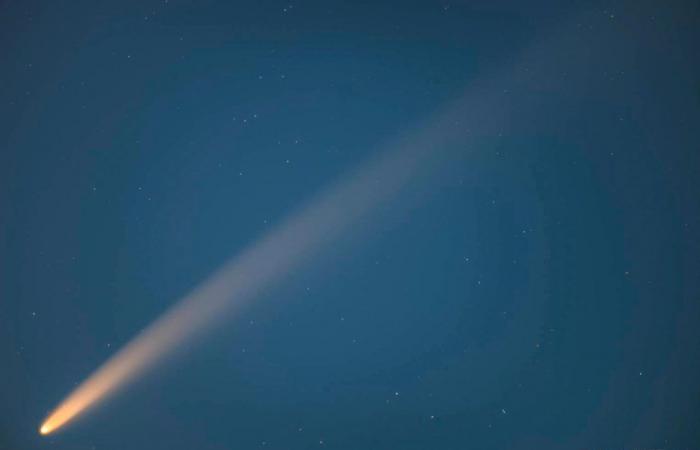This Sunday, October 13 will be the best day to observe comet Tsuchinshan-ATLAS with the naked eye in Thailand.
The comet should be visible until the end of October and according to astronomers, it will then take 80,660 years before it passes close to Earth again.
The National Astronomical Research Institute of Thailand (NARIT) has issued an invitation to follow the appearance of comet Tsuchinshan-ATLAS, which has returned to Thai skies.
It can be seen in the west after sunset and should be bright enough to be seen with the naked eye.
To find good observation places see:
Guide to Astro-Tourism or astronomical tourism in Thailand
Comet Tsuchinshan-ATLAS, or C/2023 A3, has been visible in the evening since Friday.
It can be spotted in the west as soon as the sky darkens, to the right of Venus (the brightest object in the sky at that time).
Astronomers predict that the comet will have a magnitude of around -4 (a lower number indicating greater brightness), making it possible to see it with the naked eye in dark, unpolluted skies.
The comet will remain visible until around 6:35 p.m. Thai time.
Then, the observation window will extend over the following days.
The best day to observe it will be Sunday, October 13, when the comet will approach closest to Earth, at a distance of 70.6 million kilometers.
It will appear bright and positioned higher in the sky, allowing plenty of time to observe it.
As the comet’s brightness continues to increase, astronomers predict that on Sunday the comet could shine as brightly as Venus.
To locate the comet, once you have a general idea of its position, look for a faint, fuzzy object that is not as sharp as other stars.
Using a telescope or binoculars can help confirm the observation and reveal the comet more clearly.
If you take a long exposure photo, you may be able to capture the tail of the comet.
Large images of comets shown in newspapers are usually photographs, and so the comet does not appear that way to the naked eye.
Comet Tsuchinshan-ATLAS was discovered in early 2023 by astronomers from the Tsuchinshan Observatory in China and the ATLAS (Asteroid Terrestrial-impact Last Alert System) telescope array in South Africa.
Astronomers around the world have been closely monitoring its increase in brightness.
On September 28, 2024, the comet made its closest approach to the Sun and survived without breaking up.
It will come closest to Earth on October 13 before moving away and disappearing from our sight at the end of the month.
See also:
Thailand launches “Incredible Dark Sky” project for astronomical tourism
Source : The Nation Thailand






